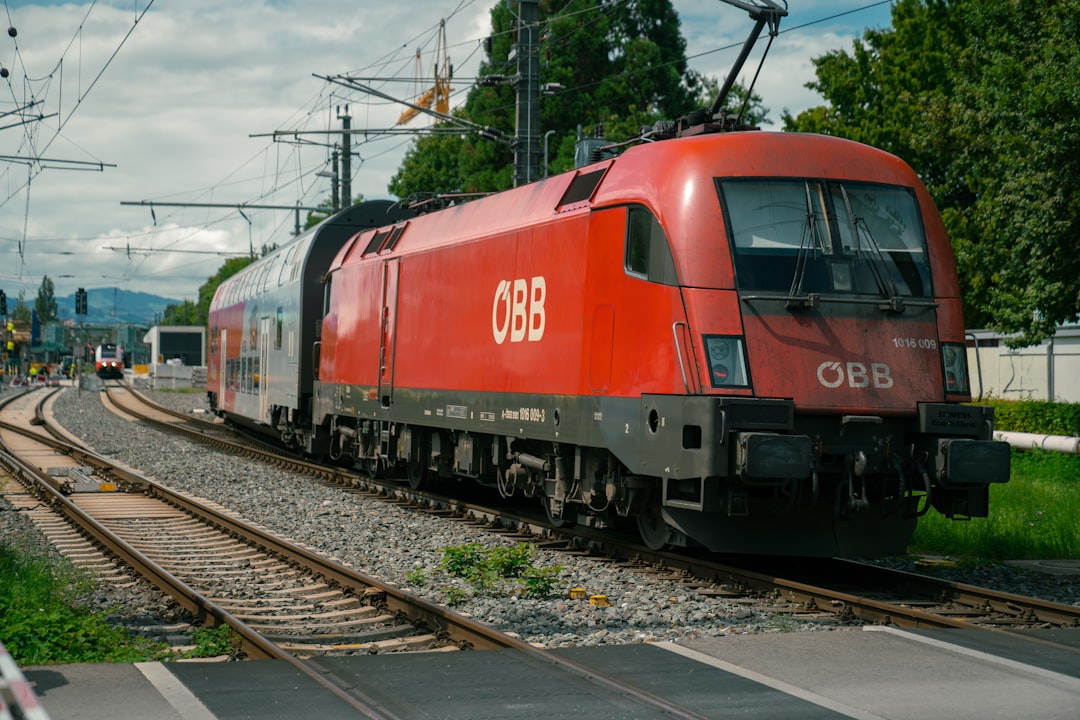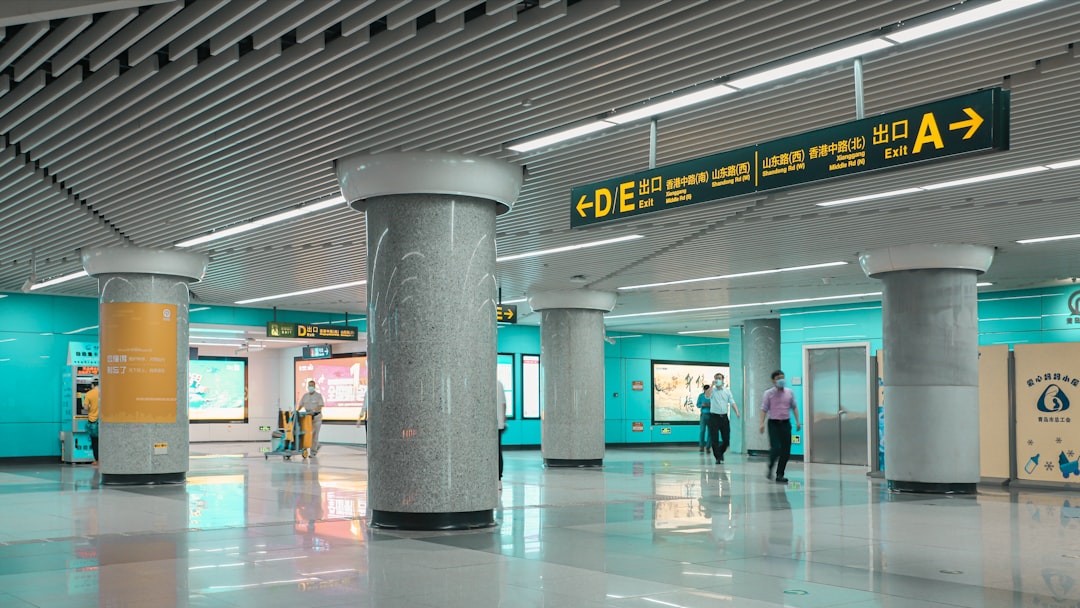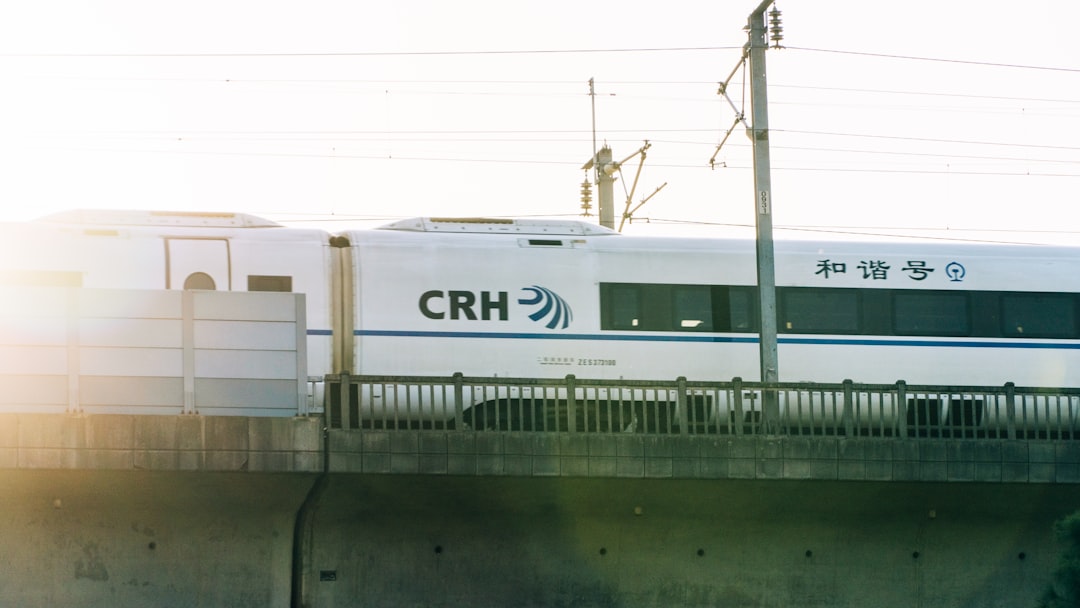

Engage prospects with a scan and streamline customer engagement with FREE QR code marketing tools by Sona – no strings attached!
Create a Free QR CodeFree consultation

No commitment

Engage prospects with a scan and streamline customer engagement with FREE QR code marketing tools by Sona – no strings attached!
Create a Free QR CodeFree consultation

No commitment
In manufactured home transport, operational complexity and customer expectations often collide. Providers juggle multi-state regulations, oversize load permitting, route surveys, and coordination with parks, dealers, and site crews. At the same time, homeowners and developers expect fast quotes, clear status updates, and an easy way to submit documents and feedback. Many teams still rely on paper forms, static brochures, and phone-based processes that create bottlenecks, invite errors, and leave valuable engagement data untracked.
QR codes solve these gaps by turning every physical touchpoint into a digital gateway. When placed on trucks, signage, mailers, permits, and move-day paperwork, they drive customers to the right action: request a quote, schedule an inspection, upload documents, track a move, or share feedback. The result is a measurable, automated workflow that connects offline moments with online systems, reduces manual work, and increases conversions across the customer journey.
By embedding QR codes throughout the lifecycle, manufactured home transport companies gain visibility into intent signals that previously went unseen. Engagement becomes trackable, follow-ups are automated, and revenue attribution improves. With modern platforms like Sona QR, teams can generate codes, manage destinations, sync data to the CRM, and connect scans to pipeline impact without redesigning their entire tech stack.

Many manufactured home transport firms unintentionally lose high-intent prospects because early interactions are not captured in a central system. A homeowner might walk by a yard sign, pick up a brochure at a mobile home park, or watch a demo video without submitting a form. QR codes resolve this by connecting physical assets to digital workflows that can be tracked, scored, and followed up in real time.
Start by mapping the key moments where friction occurs: quote requests, inspection scheduling, move-day updates, and post-delivery feedback. Replace analog processes with QR-triggered flows that work on any device. This removes the need for phone tag, PDF attachments, and manual data entry, while creating a complete record of engagement that your operations and sales teams can act on.
Moving from disjointed, manual activities to QR-activated journeys changes outcomes quickly. Teams spend less time chasing information and more time serving customers. With Sona QR, you can standardize code creation, integrate with your CRM, and view the full impact of each scan on performance and revenue.

Manufactured home transport involves multiple stakeholders, complex compliance, and geographically dispersed touchpoints. QR codes bring order and measurement to what is often a messy, offline-heavy process. They make it simple for customers to act and for teams to attribute results to specific assets and campaigns.
Consider where your physical materials currently sit: truck wraps, brochures, permits, inspection reports, site signage, trade show displays, and direct mail. Without a scannable path to action, interest often remains anonymous. QR codes give every moment a clear next step and pass the resulting data to the systems your business already uses.
By removing friction and providing measurable pathways to action, QR codes modernize how manufactured home transport firms capture demand, manage operations, and improve customer satisfaction.
Not all QR codes are created equal. Choosing the right format ensures the user experience is smooth and your team collects the data needed to manage operations effectively. For manufactured home transport, these formats deliver the most value across quoting, compliance, and customer care.
In practice, most transport providers rely on a mix of web-link and form codes for booking and scheduling, vCards for relationship continuity, and dynamic codes for analytics and flexibility. With Sona QR, you can generate, manage, and update these formats in one dashboard and connect their activity to your CRM.

Growth in manufactured home transport often begins with visibility and speed. Your audience encounters your brand in the field, on the road, at trade shows, and through partner channels. Placing QR codes where they already look for answers turns passive impressions into measurable demand.
Start by mapping the high-traffic physical surfaces you control and the moments that routinely stall. For most providers, the biggest wins come from upgrading mailers, vehicle graphics, and site signage that historically produce interest but little attribution. Then expand to documentation and partner collateral to capture engagement signals that usually go unseen.
By concentrating QR placements where drop-offs typically occur, you can optimize spend, increase conversion rates, and create a repeatable mechanism for turning field exposure into measurable revenue.

QR codes shine when they replace analog steps that take too long or go untracked. In manufactured home transport, three use cases consistently deliver value across the lifecycle: scheduling, quote capture, and status or feedback loops. Each connects a physical moment to a digital action that your team can measure and improve.
First, focus on the friction that frustrates customers the most. When homeowners cannot easily schedule inspections or find clear instructions, they delay decisions or call multiple times for help. Use QR-triggered forms and guides to simplify these steps and convert intent while interest is high. Then expand to post-delivery feedback and status updates that reduce support efforts and reveal upsell opportunities.
These targeted deployments reduce friction at decisive moments. Scans turn into structured data, structured data triggers workflows, and workflows produce faster bookings and higher satisfaction. Over time, you will see fewer unanswered calls, shorter cycles from interest to scheduled move, and clearer attribution for offline spend.
Every scan signals intent and context. A homeowner scanning a truck wrap in a specific neighborhood suggests location and timing. A park manager scanning a poster in a leasing office suggests role and urgency. By assigning unique codes to different placements and actions, you automatically create audience segments that reflect real-world behavior.
With QR-powered segmentation, intent-driven retargeting gets smarter. Rather than relying on generic lists, you can tailor messages based on what the scanner was likely trying to do. Identity is enriched as scans connect to form fills, emails, and calls, and your CRM becomes a living map of buyer journeys that started offline.
When you build audiences from real scan behavior, retargeting stops being guesswork. Your team speaks to the right person with the right message at the right moment, and conversion rates reflect that alignment.
QR codes are connective tissue for an industry that lives in the field. They make offline activity measurable and online outcomes accessible without logins or app downloads. When integrated across channels, they provide a consistent experience and a single source of truth for what is working and why.
Think of QR codes as onramps to your digital engine. Each physical surface has a role in the funnel. Your trucks create awareness. Your brochures and one-pagers build consideration. Your move-day paperwork drives conversion and loyalty. With unique, dynamic QR codes on each asset, you can route scanners to the best next step and attribute downstream outcomes.
By coordinating QR code messaging across these channels, you create a connected funnel that captures intent wherever it appears. With Sona QR, you manage all codes centrally, monitor performance, and sync scan data to marketing and sales systems for real-time action.
Launching a QR campaign for manufactured home transport does not require a full tech overhaul. It requires clarity of purpose, thoughtful design, and disciplined measurement. Use this checklist to guide your rollout, starting with one or two high-impact use cases, then expanding once the wins are clear.
Aim for momentum over perfection. The fastest path to value is replacing a few high-friction steps with scannable workflows, then optimizing based on real-world data. As adoption grows, layer in deeper integrations, segmentation, and automation.
Identify the bottlenecks that cost the most time or revenue. Common candidates include slow quote capture, manual inspection scheduling, and limited visibility into move status. For example, if customers frequently call for appointment availability or permit guidance, launch a scheduling and compliance microsite accessed via QR on inspection packets and on-site posters.
Define a clear outcome for the pilot. You might aim to reduce time-to-schedule by 50 percent, increase quote-to-book conversion by 15 percent, or double feedback response rates after delivery. Setting a measurable target will align your team and make it easier to evaluate ROI.
Decide whether the destination needs to change over time or deliver analytics. For most marketing and operations use cases, dynamic codes are best because they provide flexibility and detailed tracking. Static codes can be useful for permanent contact details like vCards or fixed PDF downloads.
If measurement and retargeting are in scope, dynamic codes are essential. They log scans by asset, location, and time, and they allow you to correct landing pages without reprinting. This makes testing and iteration far cheaper and faster.
Visibility and scannability determine adoption. Incorporate your logo, brand colors, and a clear frame around the code. Pair each code with a short, benefit-driven call to action like Scan to get an instant quote or Scan for inspection times. Test on multiple devices, at different distances and angles, and in the actual environments where scanning will occur. For a quick walkthrough, watch this short QR tutorial.
Run a quick usability check with a few customers or partners. Watch them scan, complete the form, and interpret the result. Small tweaks to hierarchy, field order, or confirmation messages can significantly lift completion rates.
Start where you already have attention. Trucks, direct mail, dealer desks, and site signage typically produce the most immediate scans. Match placement to use case: a truck wrap code should lead to a fast quote; a leasing office poster should lead to scheduling and site prep guidance; a delivery receipt code should route to a feedback form.
Roll out in stages so you can isolate impact. For example, deploy in one metro area or on one fleet segment, measure results for two to four weeks, then expand. Use unique codes per channel so you can compare performance.
Measurement is where QR campaigns excel. Use dashboards to see which assets are scanned, when, and by whom. Examine conversion rates, time-to-complete forms, and drop-off points. Iterate on copy, design, and destination content based on what the data reveals.
Integrate with your CRM and marketing tools so scans trigger workflows. For instance, route urgent inspection requests to dispatch, send automated reminders to incomplete quotes, and alert sales when a high-value developer scans a pricing sheet. Over time, refine your audience segments and retargeting rules to match real-world behavior.

For many transport providers, the biggest challenge is proving that offline investments lead to revenue. QR codes solve this by creating a bridge between physical exposure and digital action. Advanced analytics turn simple scans into insights about buyer journeys, regional performance, and asset ROI.
Without end-to-end tracking, teams rely on anecdotes or first-touch vs last-touch attribution that misrepresents what actually drove the outcome. With QR analytics, you can finally see how a truck wrap scan led to a quote request that became a scheduled move after an email reminder and a follow-up call.
When you link scans to outcomes, you can justify spend, prioritize high-performing assets, and forecast demand more accurately. Over time, the data will point to clear patterns that inform everything from creative design to regional expansion.
QR codes deliver the biggest gains when they are deployed thoughtfully and backed by process. Many initiatives underperform because codes are generic, destinations are unclear, or data is not integrated. The following practices help you capture more value from every scan.
Begin with the media your audience already uses. In manufactured home transport, that usually means vehicle graphics, site signage, direct mail, and move-day paperwork. Make each code specific to the action the scanner likely wants at that moment, and support it with automation so momentum is not lost after the scan.
Example: Add a QR code labeled Scan for on-site inspection times to your permit packet and on-site poster. When scanned, it loads a scheduler that shows availability and prep instructions, captures a preferred window, and sends a confirmation email. Scans trigger a dispatch notification and add the contact to a reminder sequence. Response times drop, no-shows decline, and your team gains full visibility into customer readiness.
QR codes are not just links. They are a strategy for unifying offline engagement with digital action in a sector that operates largely in the field. For manufactured home transport, they replace friction with speed, anonymity with attribution, and manual follow-ups with automated workflows that scale.
By placing dynamic QR codes on trucks, signage, mailers, and paperwork, providers create a consistent, measurable journey from first inquiry to final mile. Scan data enriches the CRM, triggers timely outreach, and reveals which assets drive real pipeline. Customers benefit from faster responses, clearer guidance, and self-serve tools that work on any device.
If your team is ready to capture demand at the source and convert it into measurable results, start small and focused. Choose one friction-heavy use case, deploy QR codes on the most visible assets, and measure everything. As you standardize what works, expand to additional placements and segments to build a connected, data-driven engine for growth.
With Sona QR, you can generate and track your first codes in minutes, route scans to the right destinations, and sync data to your CRM. Sona.com completes the picture by attributing scans to revenue and unifying touchpoints across the buying journey. Start creating QR codes for free.
QR codes have revolutionized manufactured home transport services by transforming complex logistics and customer interactions into seamless, trackable experiences. Whether it’s simplifying access to transport schedules, providing instant updates to clients, or enhancing verification processes, QR codes replace traditional paperwork with quick, mobile-friendly actions that boost efficiency and transparency. Imagine having real-time insights into every scan—knowing exactly when and where your services are accessed and using that data to optimize operations and customer satisfaction.
With Sona QR, creating dynamic, trackable QR codes is effortless. Update your campaigns instantly without reprinting, monitor engagement down to each scan, and connect those interactions directly to improved service delivery and client retention. No more guesswork—just smarter, more effective manufactured home transport management.
Start for free with Sona QR today and transform every scan into a streamlined process, a satisfied customer, or a successful delivery.
Transporting a manufactured home involves multi-state regulation compliance, obtaining oversize load permits, conducting route surveys, coordinating with parks, dealers, and site crews, and managing inspection scheduling, move-day updates, and post-delivery feedback.
The article does not specify the cost to move a manufactured home.
Best practices include scheduling inspections via QR codes, uploading necessary permits digitally, coordinating delivery windows, and providing customers with clear, mobile-friendly guidance through QR-triggered workflows to reduce delays and support tickets.
You can find reliable services by engaging providers that use modern digital tools like QR codes for fast quotes, inspection scheduling, and live move tracking, which improves communication, transparency, and responsiveness.
Legal requirements include complying with multi-state regulations and obtaining oversize load permits, with QR codes providing customers access to up-to-date regulatory resources and compliance guides.
QR codes connect physical touchpoints to digital workflows, enabling fast quote requests, inspection scheduling, document uploads, move tracking, and feedback collection, which reduces manual work and increases conversion while providing measurable engagement data.
Common QR code formats include web links for quotes and status pages, vCards for contact details, forms for scheduling and feedback, SMS or email templates for urgent communication, and dynamic codes for flexible content updates and analytics.
Effective placements include truck graphics, yard signs, dealer counters, direct mail, site signage, move-day paperwork, inspection forms, trade show materials, and delivery receipts to capture customer intent at key moments.
They can track scan rates, form completions, scheduling times, quote-to-book conversion, and scan locations using QR analytics dashboards integrated with CRM systems to attribute leads and revenue accurately.
Dynamic QR codes allow updating destinations without reprinting, enable scan analytics by asset and location, support device or language routing, and facilitate A/B testing and retargeting for optimized customer engagement.
By assigning unique QR codes to different placements and journey stages, companies can segment audiences by role, intent, location, and timing, syncing this data to CRM and ad platforms for personalized retargeting campaigns.
Start with identifying high-friction bottlenecks, choose a focused use case like quote capture or inspection scheduling, select appropriate QR code types, design and test codes for visibility and usability, deploy on high-impact channels in stages, and track performance to optimize.
QR codes provide customers with easy access to fast quotes, scheduling tools, move status updates, and feedback forms on any device, reducing delays, eliminating phone tag, and delivering clear guidance throughout the transport process.
Providers can add unique QR codes to brochures, direct mail, social media campaigns, digital signage, trade show materials, and vehicle graphics to create a connected, measurable funnel that captures offline intent and drives online actions.
QR codes capture data on scan time, location, device, and asset, enabling real-time alerts, CRM integration, lead scoring, and revenue attribution models that connect offline exposure to booked moves and sales outcomes.
Use unique codes per asset and campaign, add UTM parameters for web analytics, trigger automated follow-ups, train staff and educate customers on scanning benefits, and place codes where the audience expects relevant actions.
Use Sona QR's trackable codes to improve customer acquisition and engagement today.
Create Your FREE Trackable QR Code in SecondsJoin results-focused teams combining Sona Platform automation with advanced Google Ads strategies to scale lead generation

Connect your existing CRM

Free Account Enrichment

No setup fees
No commitment required

Free consultation

Get a custom Google Ads roadmap for your business






Launch campaigns that generate qualified leads in 30 days or less.
